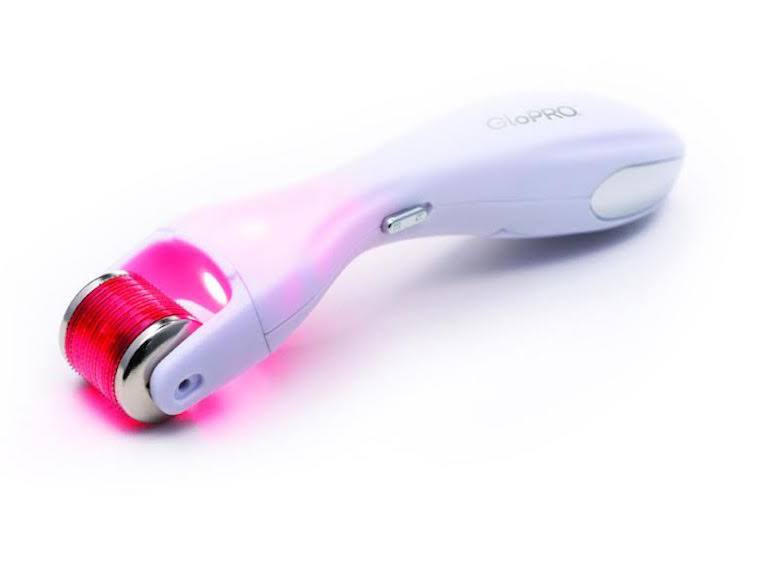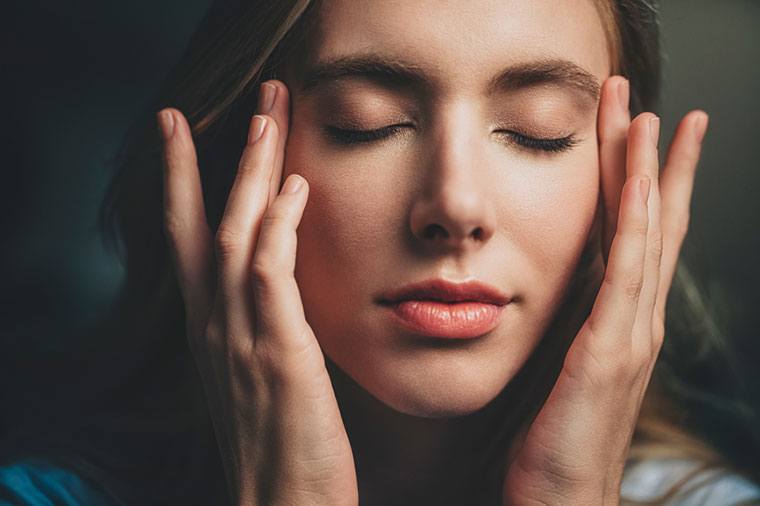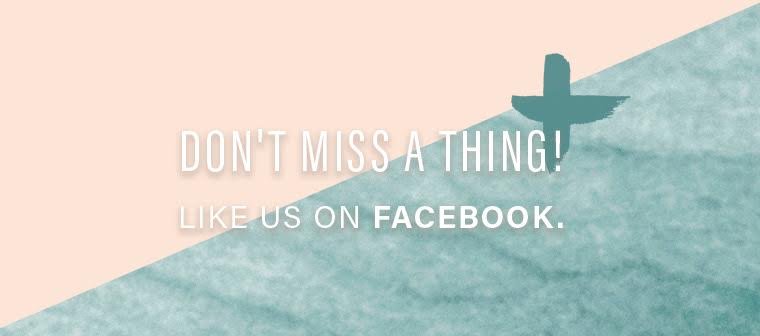I Tried Microneedling at Home for a Week—Here’s What Happened
Microneedling—the buzzy treatment that pokes your skin with tiny needles—has always freaked me out. Puncturing your face with something sharp? Hey, I'm game to try lots of things in the name of beauty (from replacing my cleanser with honey to cutting dairy for a clear complexion), but jabbing myself with what's essentially a weapon doesn't seem...normal.
But many experts swear that microneedling gives you an otherworldly glow, along with other benefits (and, hey, Gwyneth Paltrow loves it). So when a Glo Pro by Beauty Bioscience came across my desk, I decided it was time to put my fears aside and take the plunge—er, prick.
Many experts swear that microneedling gives you an otherworldly glow, along with other benefits (and, hey, Gwyneth Paltrow loves it).
Not only is this new at-home handheld device (which sells for $199) a "microstimulation" tool, but it also uses LED light therapy, which has a blemish-reducing, collagen-stimulating rep thanks in large part to social media love by celebs like Lena Dunham and Jessica Alba.
Two raved-about beauty boosters in one little gadget? Sounds like a power couple if I've ever heard of one (sorry, Tom and Gisele). So I had to try it.
Keep reading to find out what happens when you subject your skin to tiny needles and LED light for a week.

What it's supposed to do
"Microneedling is an aesthetic procedure in which miniature needles roll over the skin to penetrate the stratum corneum, or the outermost layer that contains dead skin cells," says Neil Sadick, MD, of Sadick Dermatology in New York.
Sounds scary, right? But studies have shown that the treatment is effective at "improving skin texture, decreasing the size of your pores, and reducing the appearance of acne scars," says Dr. Sadick. Part of that's because of the microchannels—miniature holes on your top layer of skin—that open up after using the Glo Pro. "The minuscule wounds stimulate collagen production and allow deeper penetration and absorption of topical products," he says.
Studies have shown that the treatment is effective at "improving skin texture, decreasing pore size, and reducing the appearance of acne scars."
On top of that, he adds that LED light can reduce inflammation and redness, which will make your skin look clearer and more radiant. "Combined, these treatments can complement each other for skin rejuvenation," says Dr. Sadick.
But how does a session in front of your bathroom mirror compare to one at a spa or the derm's office? "[At-home microneedling devices] have smaller needles, which results in a compromised clinical effect," Dr. Sadick says. "Still, they're safe and an excellent [add-on] for use with your topical skin-care products."
The Glo Pro also vibrates, which increases microcirculation of blood in the skin (yes, that's a good thing—and a study backs that up).

What it did for me
That first night, after plugging in the Glo Pro and hitting the power button, I felt a tinge of fear as it started vibrating in my hand, red light glowing. But when I pressed it onto my cheek and started slowly rolling the device up and down, I was relieved: It didn't hurt at all. In fact, I thought it felt kind of nice—like a prickly sandpaper massage.

{{post.sponsorText}}
I slowly glided the Glo Pro across all sections of my face, going back and forth about five times each—the whole thing only took a couple of minutes. My skin revealed the tiniest indents from the hundreds of needles puncturing it, but it's not like I looked like the villain in Hellraiser. I was certainly flushed, though, and experienced a slight tingling effect where I used the product.
Thankfully, Dr. Sadick says this is normal, since the device is actually creating "microwounds" on your face. "Your skin following a microneedling treatment might be a little pink, and will, worst case, have a few tiny punctate scabs that fade in a few days," he says. (And no, that "worst case" didn't calm my nerves at all.)
My skin revealed the tiniest indents from the hundreds of needles puncturing it, but it's not like I looked like the villain in Hellraiser.
The same tingling sensation continued after I applied my usual serum and moisturizer regimen. "Any stimuli like the application of topicals will be perceived more intensely," says Dr. Sadick.
When I peered into my mirror the next morning, my own radiance woke me up (I'm kidding—kind of). My pores were minimized and my complexion looked more even and, well, glowy. Dr. Sadick affirmed that I wasn't imagining it. "Most people will begin to see results after the very first treatment," he said. Glo Pro claims you'll see changes after 30 days of regular use.
I'm now seven days in and the uber-fine lines around my eyes seemed to have faded and my face just looks more...tight, as if I truly did have a facial the night before. "Microneedling can be done every four to six weeks until you achieve what you're looking for," says Dr. Sadick, though he and Glo Pro say using it more frequently—even daily—can be beneficial, as long as you don't have a reaction to it.
With my newly luminous skin, it looks like the multitasking device has earned its spot on my beauty shelf (and in my next #shelfie). And needle freakout? It's over. Next stop: the acupuncturist.
To get an otherworldly glow from the inside out, sip on these 9 smoothies for healthy skin and try these 11 complexion-boosting supplements.
Loading More Posts...
